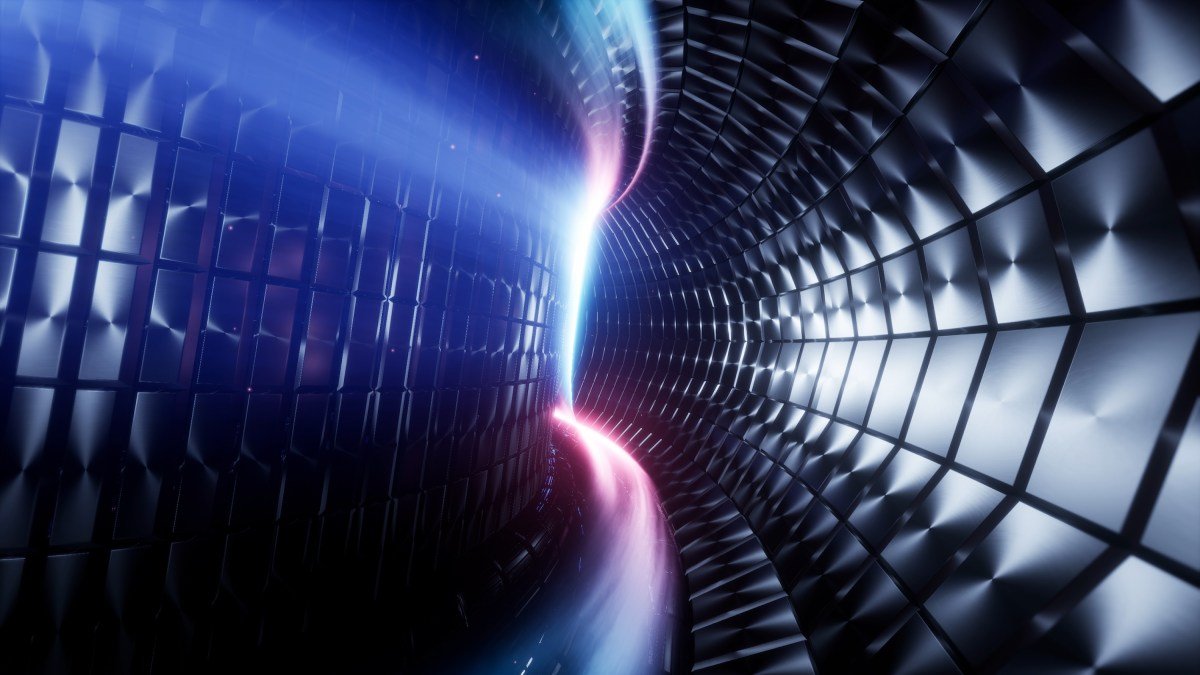
Over the past a number of years, fusion energy has gone from the butt of jokes — at all times a decade away! — to an more and more tangible and tantalizing expertise that has drawn buyers off the sidelines.
The expertise could also be difficult to grasp and costly to construct in the present day, however fusion guarantees to harness the nuclear response that powers the solar to generate almost limitless vitality right here on Earth. If startups are capable of full commercially viable fusion energy vegetation, then they’ve the potential to upend trillion-dollar markets.
The bullish wave buoying the fusion trade has been pushed by three advances: extra {powerful} pc chips, extra refined AI, and {powerful} high-temperature superconducting magnets. Collectively, they’ve helped ship extra refined reactor designs, higher simulations, and extra advanced management schemes.
It doesn’t harm that, on the finish of 2022, a U.S. Division of Power lab introduced that it had produced a managed fusion response that produced more power than the lasers had imparted to the gasoline pellet. The experiment had crossed what’s generally known as scientific breakeven, and whereas it’s nonetheless an extended methods from business breakeven, the place the response produces greater than your complete facility consumes, it was a long-awaited step that proved the underlying science was sound.
Founders have constructed on that momentum lately, pushing the non-public fusion trade ahead at a speedy tempo.
Commonwealth Fusion Programs
With a $1.8 billion Sequence B, Commonwealth Fusion Systems catapulted itself into the pole place in 2021. Since then, the corporate has been quiet on the fundraising entrance (no shock), however it has been laborious at work in Massachusetts constructing Sparc, its first-of-a-kind energy plant supposed to provide energy at what it calls “commercially related” ranges.
Sparc’s reactor makes use of a tokamak design, which resembles a doughnut. The D-shaped cross part is wound with high-temperature superconducting tape, which when energized, generates a strong magnetic subject that can include and compress the superheated plasma. In Sparc’s successor, the commercial-scale Arc, warmth generated from the response is transformed to steam to energy a turbine. CFS designed its magnets in collaboration with MIT, the place co-founder and CEO Bob Mumgaard labored as a researcher on fusion reactor designs and high-temperature superconductors.
Backed by Breakthrough Power Ventures, The Engine, Invoice Gates, and others, Devens, Massachusetts-based CFS expects to have Arc operational within the early 2030s. The corporate has raised a complete of $2 billion, based on PitchBook.
TAE
Based in 1998, TAE Technologies (previously generally known as Tri Alpha Power) was spun out of the College of California, Irvine by Norman Rostoker. It makes use of a field-reversed configuration, however with a twist: after the 2 plasma photographs collide in the midst of the reactor, the corporate bombards the plasma with particle beams to maintain it spinning in a cigar form. That improves the steadiness of the plasma, permitting extra time for fusion to happen and for extra warmth to be extracted to spin a turbine.
The corporate raised $150 million in June from current buyers, together with Google, Chevron, and New Enterprise. TAE has raised $1.79 billion in whole, based on PitchBook.
Helion
Of all fusion startups, Helion has probably the most aggressive timeline. The corporate plans to provide electrical energy from its reactor in 2028. Its first buyer? Microsoft.
Helion, based mostly in Everett, Washington, makes use of a kind of reactor referred to as a field-reversed configuration, the place magnets encompass a response chamber that appears like an hourglass with a bulge on the level the place the 2 sides come collectively. At every finish of the hourglass, they spin the plasma into doughnut shapes which can be shot towards one another at greater than 1 million mph. Once they collide within the center, further magnets assist induce fusion. When fusion happens, it boosts the plasma’s personal magnetic subject, which induces {an electrical} present contained in the reactor’s magnetic coils. That electrical energy is then harvested straight from the machine.
The corporate raised $425 million in January 2025, across the identical time that it turned on Polaris, a prototype reactor. Helion has raised $1.03 billion, based on PitchBook. Buyers embody Sam Altman, Reid Hoffman, KKR, BlackRock, Peter Thiel’s Mithril Capital Administration, and Capricorn Funding Group.
Pacific Fusion
Pacific Fusion burst out of the gate with a $900 million Sequence A, a whopping sum even amongst well-funded fusion startups. The corporate will use inertial confinement to realize fusion, however as an alternative of lasers compressing the gasoline, it would use coordinated electromagnetic pulses. The trick is within the timing: All 156 impedance-matched Marx mills want to provide 2 terawatts for 100 nanoseconds, and people pulses have to concurrently converge on the goal.
The corporate is led by CEO Eric Lander, the scientist who led the Human Genome Undertaking, and president Will Regan. Pacific Fusion’s funding is perhaps large, however the startup hasn’t gotten it all of sudden. Relatively, its buyers can pay out in tranches when the corporate achieves specified milestones, an method that’s frequent in biotech.
Shine Applied sciences
Shine Technologies is taking a cautious — and probably pragmatic — method to producing fusion energy. Promoting electrons from a fusion energy plant is years off, so as an alternative, it’s beginning by promoting neutron testing and medical isotopes. Extra not too long ago, it has been creating a method to recycle radioactive waste. Shine hasn’t picked an method for a future fusion reactor, as an alternative saying that it’s creating vital expertise for when that point comes.
The corporate has raised a complete of $778 million, based on PitchBook. Buyers embody Power Ventures Group, Koch Disruptive Applied sciences, Nucleation Capital, and the Wisconsin Alumni Analysis Basis.
Basic Fusion
Now its third-decade, General Fusion has raised $440.53 million, based on PitchBook. The Richmond, British Columbia-based firm was based in 2002 by physicist Michel Laberge, who needed to show a distinct method to fusion generally known as magnetized goal fusion (MTF). Buyers embody Jeff Bezos, Temasek, BDC Capital, and Chrysalix Enterprise Capital.
In an Basic Fusion’s reactor, a liquid steel wall surrounds a chamber wherein plasma is injected. Pistons surrounding the wall push it inward, compressing the plasma inside and sparking a fusion response. The ensuing neutrons warmth the liquid steel, which could be circulated via a warmth exchanger to generate steam to spin a turbine.
Basic Fusion hit a tough patch in spring 2025. The corporate ran wanting money because it was constructing LM26, its newest gadget that it hoped would hit breakeven in 2026. Simply days after hitting a key milestone, it laid off 25% of its staff.
Tokamak Power
Tokamak Energy takes the standard tokamak design — the doughnut form — and squeezes it, decreasing its side ratio to the purpose the place the outer bounds begin resembling a sphere. Like many different tokamak-based startups, the corporate makes use of high-temperature superconducting magnets (of the uncommon earth barium copper oxide, or REBCO, selection). Since its design is extra compact than a standard tokamak, it requires much less in the best way of magnets, which ought to cut back prices.
The Oxfordshire, UK-based startup’s ST40 prototype, which seems to be like a big, steampunk Fabergé egg, generated an ultra-hot, 100 million diploma C plasma in 2022. Its subsequent era, Demo 4, is at the moment beneath development and is meant to check the corporate’s magnets in “fusion energy plant-relevant eventualities.” Tokamak Power raised $125 million in November 2024 to proceed its reactor design efforts and increase its magnet enterprise.
In whole, the corporate has raised $336 million from buyers together with Future Planet Capital, In-Q-Tel, Midven, and Capri-Solar founder Hans-Peter Wild, based on PitchBook.
Zap Power
Zap Energy isn’t utilizing high-temperature superconducting magnets or super-powerful lasers to maintain its plasma confined. Relatively, it zaps the plasma (get it?) with an electrical present, which then generates its personal magnetic subject. The magnetic subject compresses the plasma about 1 millimeter, at which level ignition happens. The neutrons launched by the fusion response bombard a liquid steel blanket that surrounds the reactor, heating it up. The liquid steel is then cycled via a warmth exchanger, the place it produces steam to drive a turbine.
Like Helion, Zap Power relies in Everett, Washington, and the corporate has raised $327 million, based on PitchBook. Backers embody Invoice Gates’ Breakthrough Power Ventures, DCVC, Lowercarbon, Power Impression Companions, Chevron Know-how Ventures, and Invoice Gates as an angel.
Proxima Fusion
Most buyers have favored massive startups which can be pursuing tokamak designs or some taste of inertial confinement. However stellarators have proven nice promise in scientific experiments, together with the Wendelstein 7-X reactor in Germany.
Proxima Fusion is bucking the development, although, having attracted a €130 million Series A that brings its whole raised to greater than €185 million. Buyers embody Balderton Capital and Cherry Ventures.
Stellarators are just like tokamaks in that they confine plasma in a ring-like form utilizing {powerful} magnets. However they do it with a twist — actually. Relatively than power plasma right into a human-designed ring, stellarators twist and bulge to accommodate the plasma’s quirks. The end result ought to be a plasma that is still steady for longer, rising the probabilities of fusion reactions.
Marvel Fusion
Marvel Fusion follows the inertial confinement method, the identical fundamental method that the Nationwide Ignition Facility used to show that managed nuclear fusion reactions might produce extra energy than was wanted to kick them off. Marvel fires powerful lasers at a goal embedded with silicon nanostructures that cascade beneath the bombardment, compressing the gasoline to the purpose of ignition. As a result of the goal is made utilizing silicon, it ought to be comparatively easy to fabricate, leaning on the semiconductor manufacturing trade’s a long time of expertise.
The inertial confinement fusion startup is constructing an indication facility in collaboration with Colorado State College, which it expects to have operational by 2027. Munich-based Marvel has raised a complete of $161 million from buyers together with b2venture, Deutsche Telekom, Earlybird, HV Capital, and Taavet Hinrikus and Albert Wenger as angels.
First Gentle
First Light dropped its pursuit of fusion energy in March 2025, pivoting as an alternative to turn out to be a expertise provider to fusion startups and different corporations. The startup had beforehand adopted an method generally known as inertial confinement, wherein fusion gasoline pellets are compressed till they ignite.
First Gentle, which relies in Oxfordshire, U.Okay., has raised $140 million, based on PitchBook, from buyers together with Invesco, IP Group, and Tencent.
Xcimer
Although nothing about fusion could be described as easy, Xcimer takes a comparatively simple method: observe the essential science that’s behind the Nationwide Ignition Facility’s breakthrough net-positive experiment, and redesign the technology that underpins it from the bottom up. The Colorado-based startup is aiming for a 10-megajoule laser system, 5 occasions extra {powerful} than NIF’s setup that made historical past. Molten salt partitions encompass the response chamber, absorbing warmth and defending the primary strong wall from harm.
Based in January 2022, Xcimer has already raised $109 million, based on PitchBook, from buyers together with Hedosophia, Breakthrough Power Ventures, Emerson Collective, Gigascale Capital, and Lowercarbon Capital.
This story was initially printed in September 2024 and shall be frequently up to date.
Trending Merchandise










![Rustic Grey Mason Jar Sconces for Home Decor, Decorative Chic Hanging Wall Decor Mason Jars with LED Strip Lights, 6-Hour Timer, Silk Hydrangea, & Iron Hooks for Home & Kitchen Decorations [Set of 2]](https://m.media-amazon.com/images/I/41DPf4UgGOL._SS300_.jpg)
